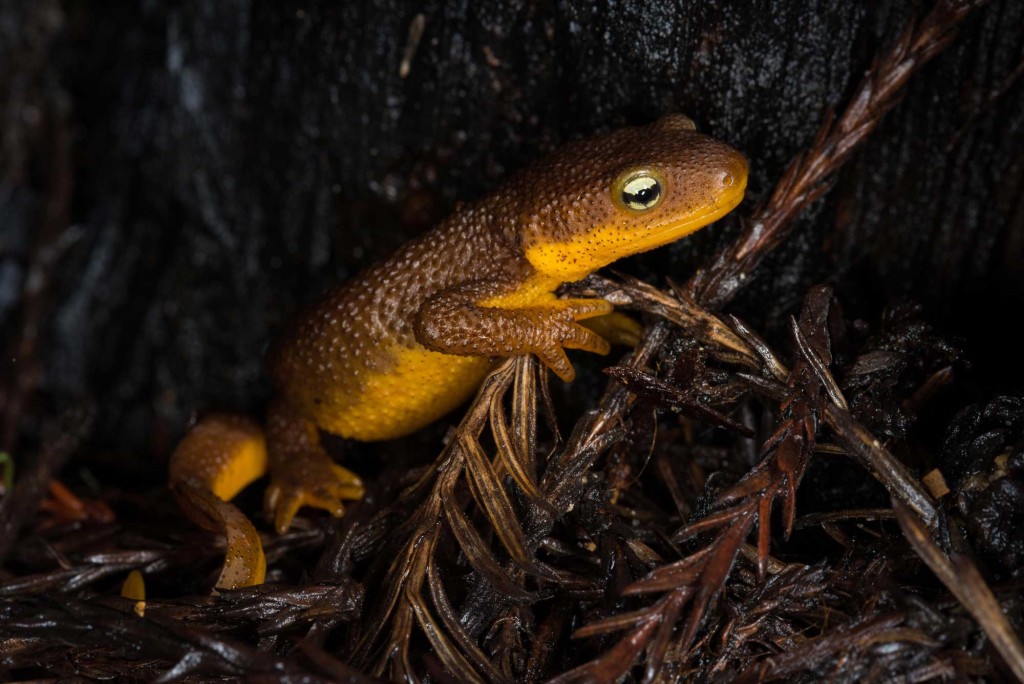When the raindrops beat down into the earth we reach for our rain jackets and umbrellas. But for the California Newt, the rainfall stimulates a more primal urge. As the clouds start a gentle downpour, newts race for the nearest pond, hoping to find a partner.

Peering over the edge of a murky pond, this was not what a group of second-grade students from Santa Clara expected to find on a recent field trip to Hidden Villa, an educational nonprofit farm and wilderness area in Los Altos Hills.
The abundance of the salamanders signaled the California drought had come to an end, for now. But the children’s questions pointed to a different drought – like all students in the state, these kids won’t start to learn about biological reproduction until third grade, and human reproduction, not until fifth.
As the students scanned the greenish water, they began to see a flash of orange belly here and a wiggle of the tail there. The single sightings turned into many as the students leaned exhilaratingly close to the edge. One student exclaimed: “There’s loads over here, all tangled.” The students watched, finding several more pairs, including some in amplexus (Latin for embrace), along with egg sacs attached to plant stems. Inevitably, one asked, “What are they doing?” “Well,” I replied, “they’re mating.” I was there as a volunteer educator, after all. And that’s what they were doing.
Most second-graders these days don’t have to confront the idea of biological reproduction, the way earlier, more rural-based generations might have. But at Hidden Villa, educators encourage exploration. That exploration is most valuable, according to the program’s education specialists, if students can connect their experiences to what they are learning in the classroom.
Jessica Peralez, teacher naturalist at Hidden Villa (and my colleague), explains that many students learn about life cycles in first grade by observing butterflies or frogs. “That makes newts a great species for them to see here because there are similarities” to frogs, she said. “But they haven’t seen the newts before.”
Peralez also values how this experience levels the playing field for students from all backgrounds: “When their teachers come to explain reproduction in class, they will all have had a concrete experience to draw on.”
As is often the case, many students are ahead of the state when it comes to sex ed. The spread of knowledge about sex is the same as it always used to be — Billy’s mom sat him down and explained how sex worked and he was so grossed out that he went and told all of his friends.
Peralez believes that seeing reproduction in the wild is important for the students. “I would have said they were hugging,” an accompanying parent remarked. Peralez countered: “By using appropriate terms, the kids realize that we are talking in a scientific way and that reproduction is not shameful. It’s just another part of life.”
Some Bay Area schools are adapting to the changes they see in their students’ experiences.
A teacher I talked to pointed out that “kids are maturing earlier and are exposed to more,” so it made sense for educators to move the start of sex ed from fifth to fourth grade. “We’re not necessarily talking directly about sex,” the teacher clarified. The goal, she said, is to make sure that “kids understand what is going on, not learning in slang or confusion.”
Among this particular group of second graders, the mating newts didn’t elicit any further questions. They continued to watch the tangle of newts in their mating ball, while the five or six males fought over the single female.
As the ponds filled with eggs, the second graders returned to school with another experience to bring the classroom to life.
